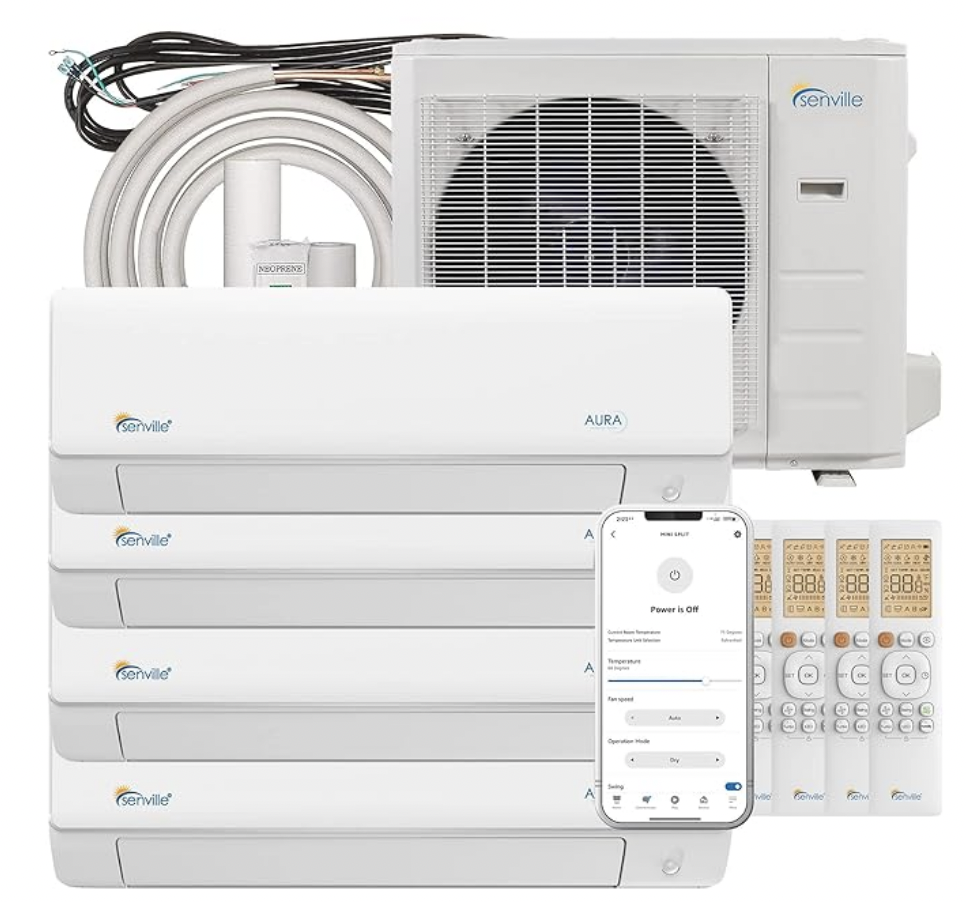Senville’s DRY mode is a feature designed to help reduce the humidity in a room, making it more comfortable for the occupants. It works by lowering the fan speed and reducing the amount of warm air coming into the room, which has a cooling effect on the space. However, it’s important to note that dry mode consumes more energy than other modes, making it less efficient. Therefore, it’s not recommended to run it all the time.
Understanding Senville DRY Mode
Dry mode is specifically designed for when it’s damp or wet but not very warm. It becomes inefficient the hotter it gets outside. Running it for just a couple of hours should be enough to get the humidity under control. It’s not meant to replace a dehumidifier altogether but simply reduces the level of humidity to a more comfortable level.
From a technical perspective, when a mini split is placed in dry mode, the fan runs continuously, and the evaporator settings are changed to help remove moisture from the air. This can have an impact on electric usage, as dry mode consumes more energy than other modes.
Technical Aspects of Senville DRY Mode

- Fan Operation: In dry mode, the fan runs continuously at a lower speed compared to other modes. This helps to circulate the air and remove moisture from the room.
- Evaporator Settings: The evaporator settings are adjusted in dry mode to optimize the removal of moisture from the air. The evaporator coil temperature is typically set to a slightly lower temperature, which helps to condense more water vapor.
- Compressor Operation: The compressor in the outdoor unit operates at a lower capacity in dry mode, as the goal is to remove moisture rather than provide significant cooling.
- Refrigerant Flow: The refrigerant flow is adjusted to reduce the amount of warm air being introduced into the room, which helps to lower the overall temperature and humidity.
- Dehumidification Process: In dry mode, the mini-split system acts as a dehumidifier, extracting moisture from the air and condensing it on the evaporator coil. The condensed water is then drained out of the system, reducing the overall humidity in the room.
- Energy Consumption: Dry mode typically consumes more energy than other modes, such as cooling or heating, due to the continuous fan operation and the need to remove moisture from the air.
Factors to Consider when Using Senville DRY Mode
- Ambient Temperature: Dry mode is most effective when the outdoor temperature is not too high. As the temperature increases, the efficiency of the dry mode decreases, and it may become less effective at reducing humidity.
- Humidity Levels: Dry mode is designed to address moderate humidity levels. If the humidity is excessively high, a standalone dehumidifier may be more effective at controlling the moisture in the air.
- Runtime Duration: It’s generally recommended to use dry mode for a limited duration, such as a few hours, to avoid over-drying the air and creating an uncomfortable environment.
- Energy Consumption: The continuous fan operation and the dehumidification process in dry mode can result in higher energy consumption compared to other modes. It’s important to consider the energy impact when using this feature.
- Maintenance: Regular maintenance of the mini-split system, including cleaning the air filters and the evaporator coil, can help ensure optimal performance of the dry mode feature.
By understanding the technical aspects and the factors to consider when using Senville’s DRY mode, you can effectively utilize this feature to maintain a comfortable and healthy indoor environment.
